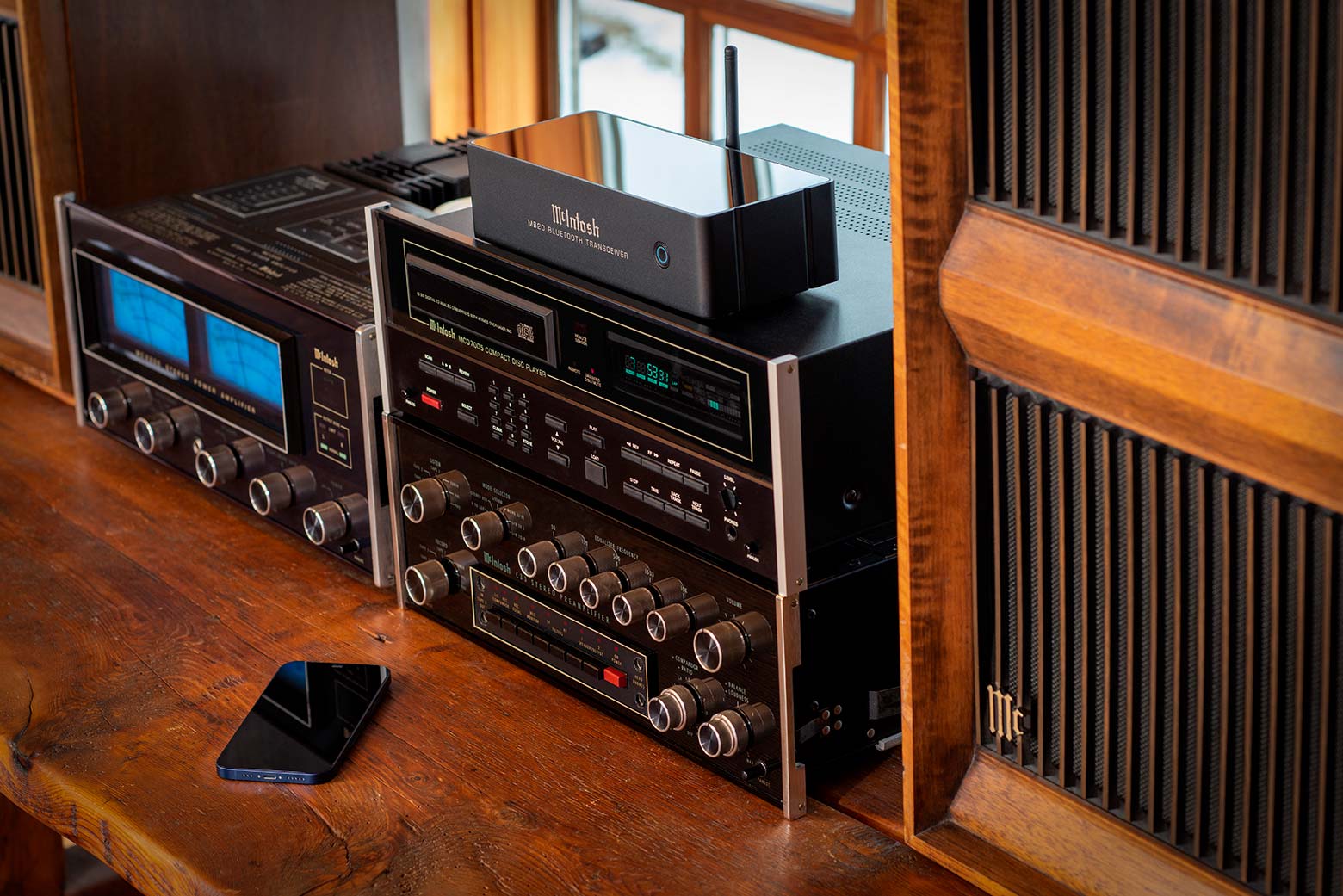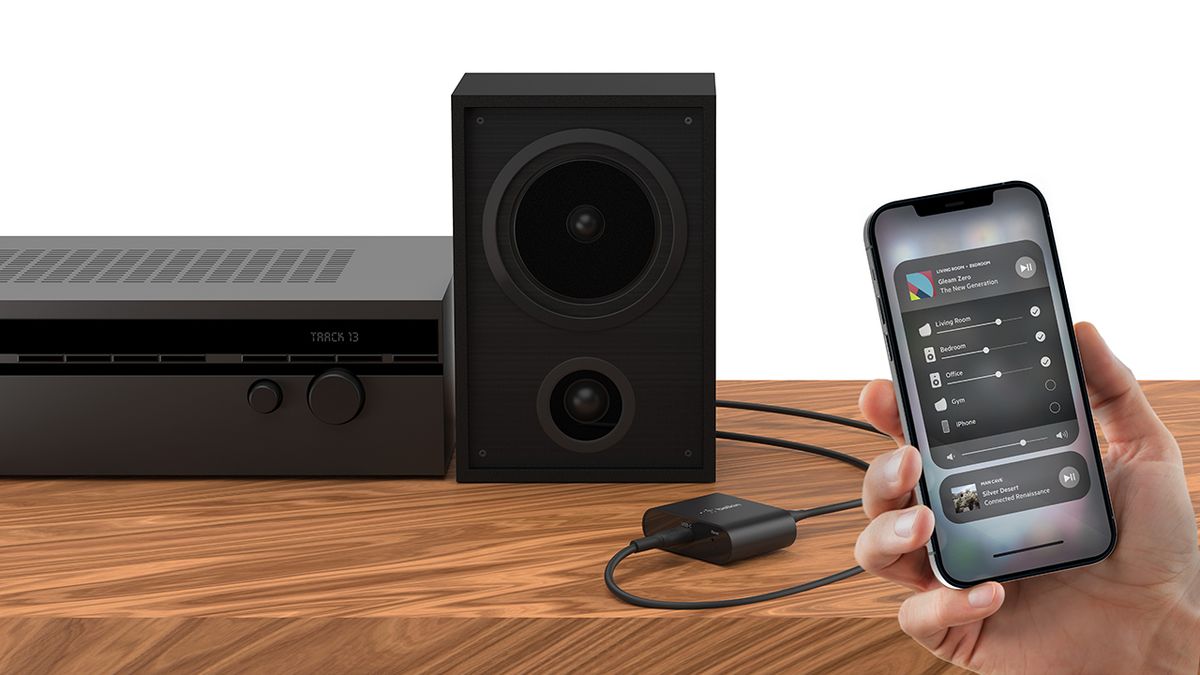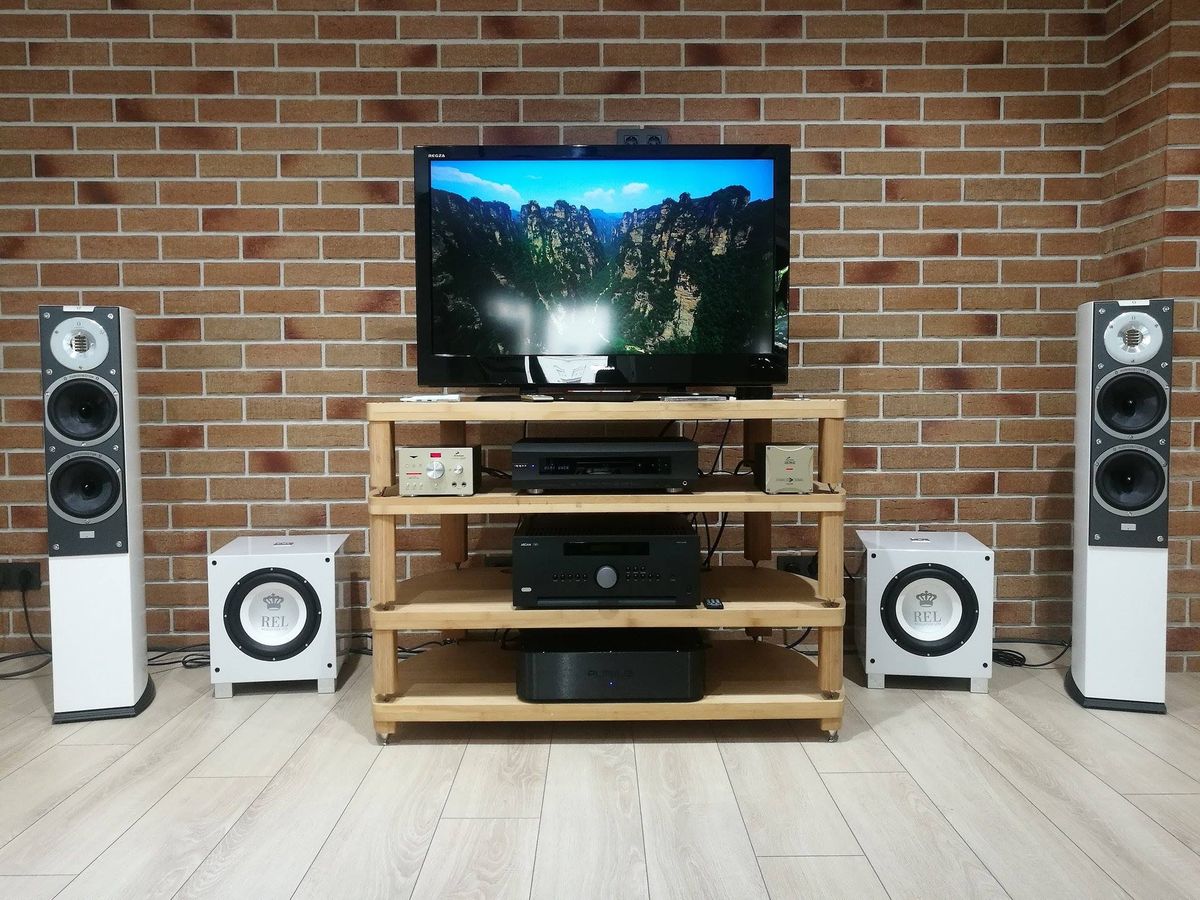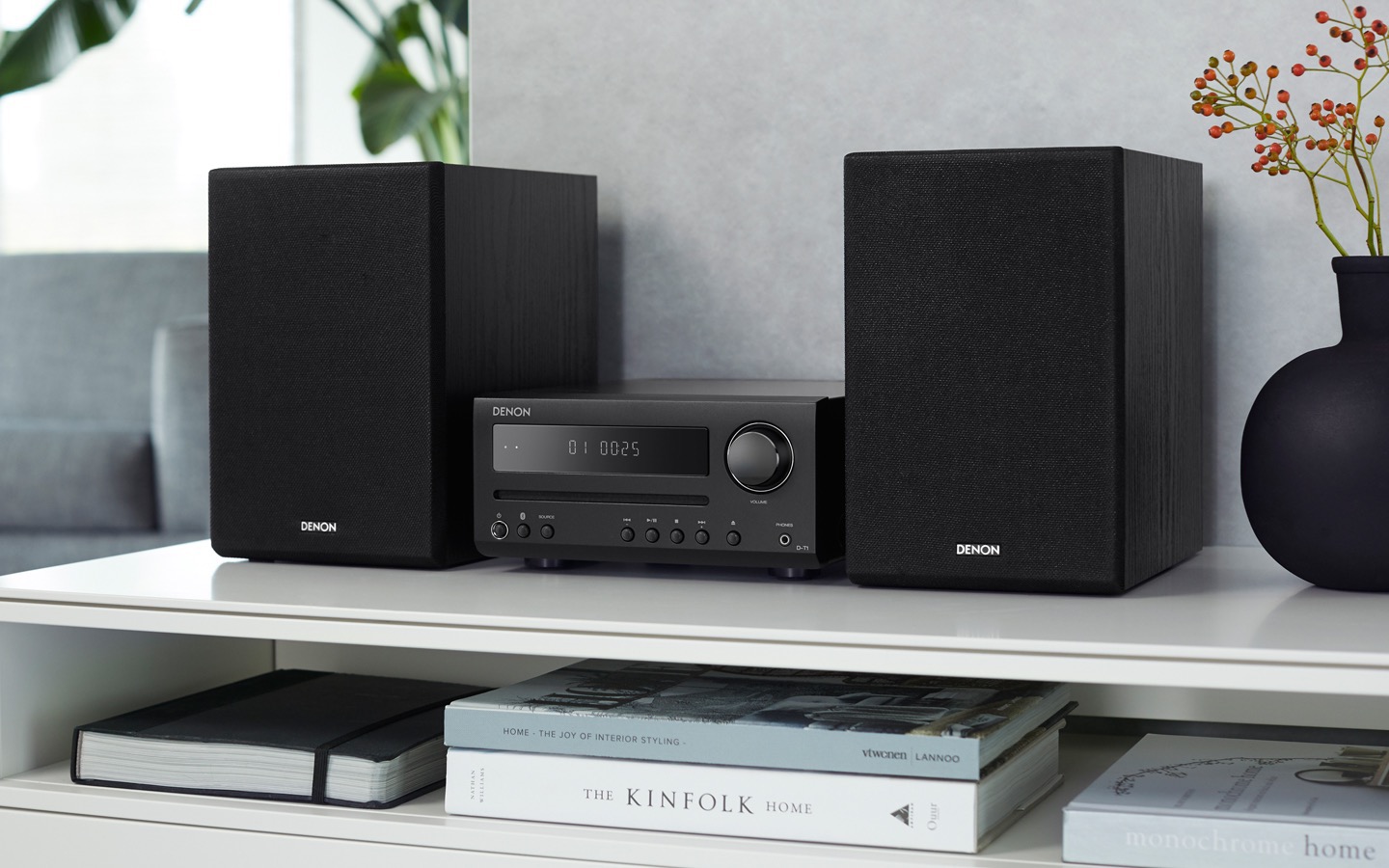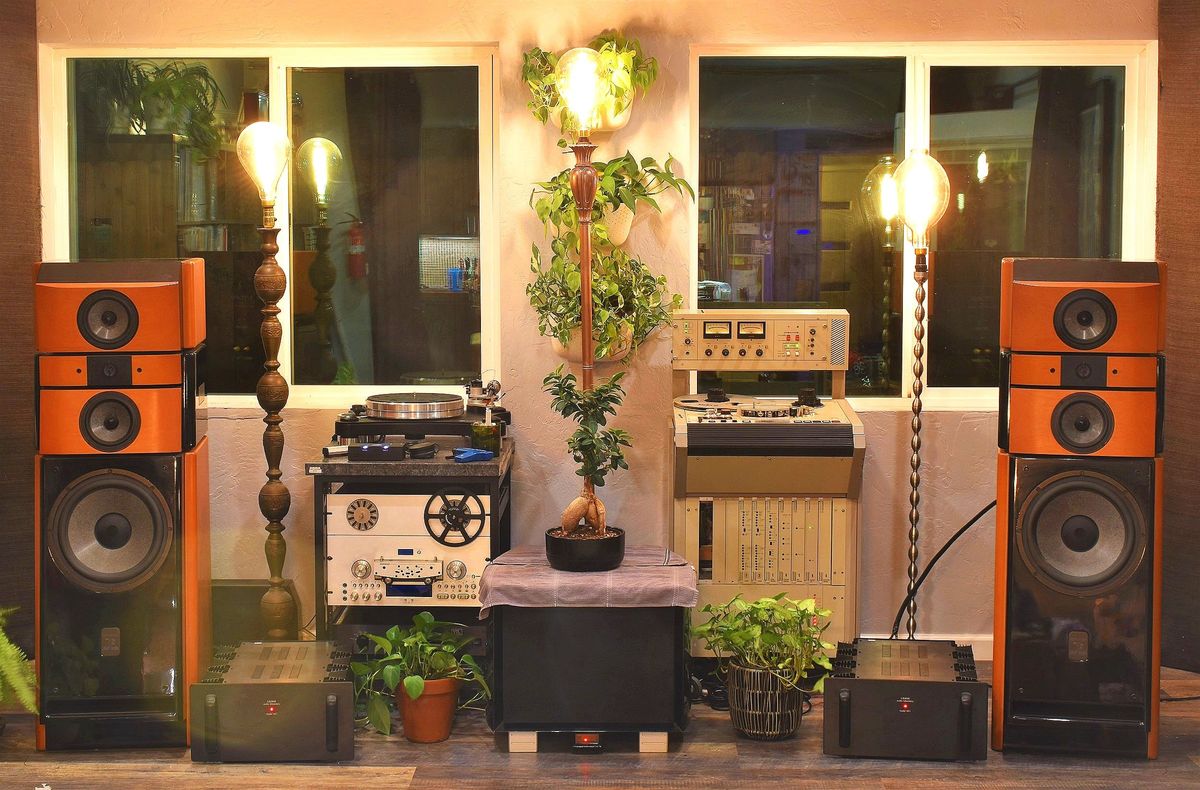Home>Production & Technology>Stereo>What Is A Stereo System
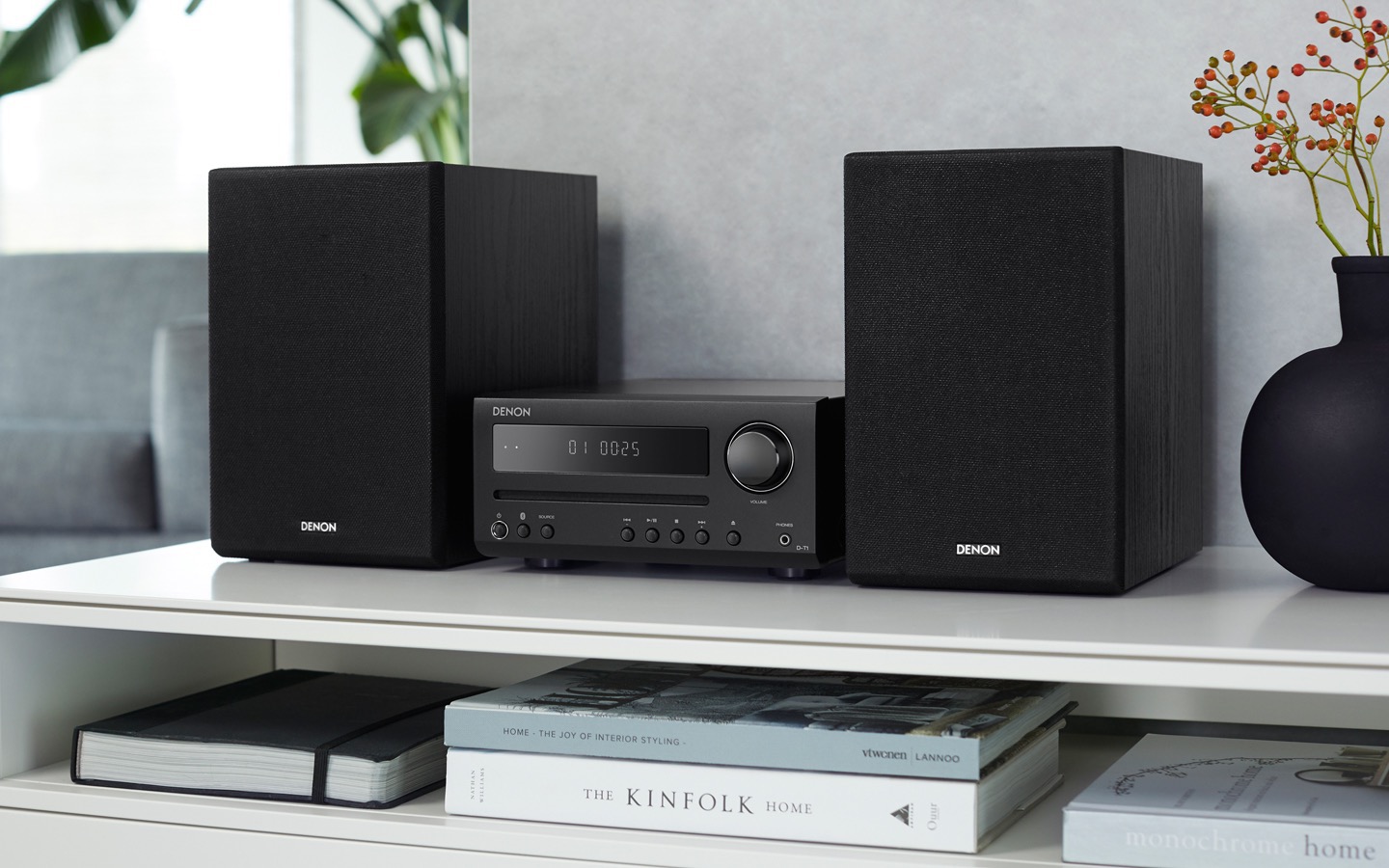

Stereo
What Is A Stereo System
Modified: January 22, 2024
Discover the wonders of a stereo system and enhance your audio experience. Explore the features and benefits of a stereo system, perfect for music enthusiasts and audiophiles.
(Many of the links in this article redirect to a specific reviewed product. Your purchase of these products through affiliate links helps to generate commission for AudioLover.com, at no extra cost. Learn more)
Table of Contents
Introduction
Welcome to the world of stereo systems! If you are passionate about music and want to experience the best possible audio quality, then a stereo system is an essential component for your home entertainment setup. A stereo system allows you to immerse yourself in your favorite songs, albums, and movies, providing a rich and dynamic audio experience.
In this article, we will explore what a stereo system is, its components, how it works, and factors to consider when choosing one. Whether you are a music lover, audiophile, or simply someone who appreciates high-quality sound, understanding the fundamental aspects of a stereo system will help you make informed decisions and elevate your audio experience to new heights.
Before we delve into the details, let’s clarify what we mean by a stereo system. Put simply, a stereo system is an audio setup that allows for the reproduction of two-channel sound. It uses a combination of components to create a lifelike and spatial audio experience, where different sounds can be heard from different directions. This technique, known as stereo sound, creates a more immersive and realistic listening experience.
In the next sections, we will discuss the various components that make up a stereo system, how they work together, and factors to consider when choosing the right stereo system for your needs. So, let’s dive in and uncover the world of stereo systems!
Definition of a Stereo System
A stereo system is a set of audio equipment that is designed to reproduce sound with two or more independent audio channels. It is called a “stereo” system because it creates a sense of depth and spatial separation by playing different sounds through two separate speakers.
The term “stereo” comes from the Greek words “stereos,” meaning solid or firm, and “phone,” meaning sound. When combined, they represent the objective of a stereo system: to generate a solid and immersive sound experience.
The primary purpose of a stereo system is to provide accurate and high-quality audio reproduction. It enables listeners to hear a variety of sounds, such as vocals, instruments, and environmental effects, with clarity and precision. By creating a realistic audio environment, stereo systems can enhance the overall enjoyment of music, movies, and other audio content.
In a stereo system, audio signals are divided into two separate channels: the left channel and the right channel. Each channel is then sent to a corresponding speaker, allowing for the creation of a three-dimensional soundscape. This spatial separation of sound is what gives stereo systems their distinct immersive quality.
It’s important to note that a stereo system differs from a mono system, which operates with a single channel and a single speaker. While a mono system can still produce sound, it lacks the depth and spatial separation that a stereo system offers. Stereo systems provide a more engaging and realistic listening experience by accurately reproducing the intended audio image.
Today, stereo systems come in a variety of configurations and sizes to suit different needs. From compact shelf systems to full-fledged home theater setups, there are options available for every budget and audio preference.
Now that we have a clearer understanding of what a stereo system is, let’s explore the components that make up this audio setup and how they work together to deliver exceptional sound quality.
Components of a Stereo System
A stereo system consists of several key components that work together to create an immersive audio experience. Understanding each component’s role will help you make informed decisions when choosing a stereo system that suits your needs and preferences. Let’s explore these components:
- Receiver: The receiver is the central hub of a stereo system. It serves as the control center for audio input and output and often includes features like AM/FM radio, Bluetooth connectivity, and input/output options for various audio sources. The receiver receives the audio signal and amplifies it before sending it to the speakers.
- Speakers: Speakers are the most noticeable and essential components of a stereo system. They convert the electrical signals amplified by the receiver into sound waves that we can hear. Stereo systems typically consist of two main speakers, each responsible for reproducing either the left or right audio channel. Speakers can come in different sizes, designs, and configurations to accommodate personal preferences and room size.
- Amplifier: The amplifier is responsible for increasing the power of the audio signal coming from the receiver before sending it to the speakers. It ensures that the audio signal is loud and clear without distortion. Some stereo systems have a built-in amplifier in the receiver, while others have a separate amplifier unit.
- Source Components: Source components are devices that provide the audio signal to the stereo system. These can include CD players, turntables, streaming devices, smartphones, and more. The receiver or amplifier typically has inputs to connect these source components, allowing you to play music from different sources through the stereo system.
- Other Accessories: In addition to the main components mentioned above, a stereo system may include other accessories to enhance the listening experience. These can include subwoofers for deep bass reproduction, equalizers for fine-tuning the sound, cables for connecting the components, and remote controls for convenient operation.
Each component of a stereo system plays a crucial role in delivering high-quality audio performance. By selecting components that align with your preferences and budget, you can create a stereo system that suits your unique listening needs.
Now that we have an understanding of the key components, let’s explore how these components work together to produce the immersive sound experience that stereo systems are known for.
Receiver
The receiver is the central component of a stereo system. It acts as the control center, receiving audio signals from various sources and distributing them to the speakers. The receiver also amplifies the signals to ensure they are powerful enough to drive the speakers and deliver clear, high-quality sound.
Modern stereo receivers often come equipped with a range of features and connectivity options to enhance the overall audio experience. They typically include built-in AM/FM radio tuners, allowing you to enjoy your favorite radio stations without the need for an external tuner. Many receivers also have built-in Bluetooth, Wi-Fi, and/or AirPlay capabilities, enabling wireless streaming from smartphones, tablets, and other devices.
When choosing a receiver, it’s important to consider factors such as power output, connectivity options, and compatibility with your audio sources. The power output of a receiver determines how loud and dynamic the sound can be, so it’s crucial to select one that matches the size of your room and your listening preferences.
Connectivity options are another important consideration. Look for a receiver that has a variety of input and output options, including RCA, HDMI, optical, and coaxial connections. This ensures compatibility with different audio sources, such as CD players, turntables, streaming devices, and gaming consoles.
Additionally, some receivers may support advanced audio formats like Dolby Atmos or DTS:X, which provide immersive surround sound experiences for movies and other compatible content.
Finally, it’s worth noting that some stereo systems have separate amplifier and preamplifier components, while others combine both functions into a single receiver unit. Separate components provide more flexibility for customization and upgrades, but integrated receivers offer a convenient all-in-one solution.
Overall, the receiver is the heart of a stereo system, connecting and controlling the audio signals that ultimately create the captivating sound experience. When choosing a receiver, consider the power, features, and connectivity options that best suit your audio needs.
Speakers
When it comes to a stereo system, the speakers play a vital role in delivering the audio experience. They are responsible for converting the electrical signals from the receiver into audible sound waves, allowing us to hear music, movies, and other audio content.
Speakers come in various shapes, sizes, and designs, each offering unique characteristics that can result in different audio qualities. It is essential to choose speakers that match your listening preferences, room size, and the intended use of the stereo system.
The two main types of speakers commonly used in stereo systems are bookshelf speakers and floorstanding speakers. Bookshelf speakers are compact and are designed to sit on shelves or stands. They are ideal for smaller rooms or spaces where wall-mounted or larger speakers may not be practical. Despite their smaller size, bookshelf speakers can still produce impressive sound quality and clarity.
On the other hand, floorstanding speakers, also known as tower speakers, are larger and typically offer a more powerful and immersive audio experience. These speakers are well-suited for larger rooms or when you want to achieve a more dynamic and enveloping soundstage. They often include multiple drivers (woofers, midrange, and tweeters) for better frequency response and can deliver deeper bass tones.
In both bookshelf and floorstanding speakers, the drivers are responsible for producing the sound. Woofers handle the low-frequency sounds (bass), midrange drivers produce the middle frequencies (vocals and instruments), and tweeters reproduce the high-frequency sounds (treble). A good set of speakers should have a well-balanced range across these frequencies for accurate and enjoyable sound reproduction.
In addition to the main speakers, some stereo systems incorporate a subwoofer. The subwoofer is specialized in producing deep and impactful bass, enhancing the overall audio experience. It adds a layer of richness and depth to the sound, particularly for music genres that heavily rely on bass or for movies with intense sound effects.
When selecting speakers for your stereo system, remember to take into consideration factors such as the size of the room, listening preferences, and budget. It’s also beneficial to test out different speakers if possible to find the ones that best suit your audio preferences.
With the right set of speakers, you can enjoy a high-quality and immersive audio experience that truly brings your music, movies, and other audio content to life.
Amplifier
The amplifier is a crucial component in a stereo system as it ensures that the audio signal from the receiver is amplified to a level that can accurately drive the speakers. It plays a vital role in enhancing the overall sound quality and delivering clear, powerful audio.
An amplifier takes the electrical signal received from the receiver and increases its power before sending it to the speakers. By increasing the power, the amplifier ensures that the sound is loud enough to fill the room and maintain clarity, even at higher volume levels.
Amplifiers can be integrated into the receiver or come as a separate component. Integrated amplifiers are commonly found in all-in-one systems or entry-level setups, providing a convenient and space-saving solution. Separate amplifiers, on the other hand, offer more flexibility in terms of customization and upgrading options, allowing for a more tailored audio experience.
When selecting an amplifier for your stereo system, it’s important to consider factors such as power output, impedance compatibility, and audio quality. Power output is measured in watts per channel (WPC), and it determines how loud and dynamic the sound can be. Higher power output amplifiers are suitable for larger rooms or if you prefer a more robust audio experience.
Impedance compatibility refers to the resistance offered by the speakers to the electrical current sent by the amplifier. It’s important to match the impedance rating of your speakers with the amplifier’s capabilities to ensure optimal performance and to prevent any damage to the components.
Audio quality is another crucial consideration. Look for amplifiers that provide clean and accurate sound reproduction, as well as low distortion levels. This ensures that the amplifier will faithfully reproduce the audio signal without adding unwanted artifacts or altering the sound characteristics.
Some amplifiers also offer additional features like tone controls, which allow you to adjust the bass and treble levels of the audio to suit personal preferences. Other amplifiers may provide advanced connectivity options such as USB, HDMI, or digital inputs for seamless integration with various audio sources.
Ultimately, the amplifier is responsible for powering the speakers in a stereo system and plays a significant role in the overall audio performance. Choosing an amplifier that matches your speakers, power requirements, and desired audio quality will help you achieve the best possible sound experience.
Source Components
Source components are essential parts of a stereo system that provide the audio signal for playback. These components allow you to connect various audio sources and enjoy a wide range of music, movies, and other content through your stereo system. Let’s explore some common source components found in stereo systems:
CD Players: CD players are widely used as a source component in stereo systems. They play audio CDs, allowing you to enjoy your favorite albums with high-quality sound. Some CD players may also support formats like MP3 or WMA, granting you the flexibility to play digital audio files.
Turntables: Turntables, also known as record players, are popular among vinyl enthusiasts. They allow you to play vinyl records, bringing a warm and nostalgic sound quality to your stereo system. Turntables require a phono preamp or a receiver with a built-in phono stage to properly amplify the low-level signal produced by the cartridge.
Streaming Devices: With the rise of digital music, streaming devices have become increasingly popular as a source component for stereo systems. These devices, such as network players, media streamers, or smart speakers, connect to your home network and allow you to stream music from various online services like Spotify, Apple Music, or Tidal. They offer convenience and access to a vast library of songs.
Smartphones, Tablets, and Computers: Many stereo systems now include auxiliary inputs or Bluetooth connectivity, allowing you to connect your smartphones, tablets, or computers as audio sources. This enables you to play music directly from your personal devices, giving you instant access to your digital music library or streaming apps.
Other Audio Sources: In addition to the above, you can also connect other audio sources such as cassette decks, reel-to-reel players, or even TV soundbars to your stereo system, depending on your setup and preferences.
When selecting source components for your stereo system, consider the flexibility and compatibility they offer. Look for components that provide multiple connectivity options (such as analog, digital, or wireless) to accommodate different audio sources. It’s worth noting that some receivers or amplifiers include built-in phono stages or streaming capabilities, which can simplify the setup and integration process.
By incorporating various source components into your stereo system, you can expand your audio options and enjoy a wide range of music and other content with the highest possible audio quality.
Other Accessories
In addition to the main components of a stereo system, there are several accessories that can enhance your audio experience and provide additional functionality. These accessories can complement the core components and add versatility to your stereo setup. Let’s explore some common accessories found in stereo systems:
Subwoofers: Subwoofers are specialized speakers designed to reproduce low-frequency sounds, commonly known as bass. They can greatly improve the overall audio experience by adding depth and impact to music and movie soundtracks. Subwoofers are especially beneficial for genres like electronic music, hip-hop, or action movies, where deep bass is prominent.
Equalizers: Equalizers allow you to fine-tune the audio frequencies to match your personal preferences or the acoustic characteristics of your listening space. They can help adjust the bass, midrange, and treble levels, allowing you to tailor the sound to your liking and create a more balanced audio presentation.
Cables: High-quality cables are crucial for ensuring optimal signal transfer between the various components of your stereo system. Look for cables with good shielding, proper connectors, and appropriate length to minimize signal degradation and interference. Common types of cables used in stereo systems include RCA cables, speaker cables, and digital cables like HDMI or optical.
Remote Controls: Remote controls provide convenient access to control the various functions of your stereo system from a distance. They allow you to adjust volume levels, switch between audio sources, and perform other operations without having to physically interact with the components.
Speaker Stands and Mounts: Speaker stands or mounts are used to position bookshelf speakers at the optimal height and angle for proper sound dispersion. They help reduce vibrations and improve overall sound quality by ensuring the speakers are correctly positioned and isolated from unwanted resonance.
Power Conditioners: Power conditioners are devices that help regulate and clean the electrical power supplied to your stereo system. They filter out noise and interference that can impact audio quality, ensuring a clean and stable power source for your components. Power conditioners can be especially useful in areas with poor electrical conditions or where electrical noise is a concern.
Media Storage: If you have a collection of CDs, vinyl records, or other physical media, investing in proper storage solutions can help keep your collection organized and protected. Media storage options range from simple shelves to dedicated storage units designed to accommodate different types of media.
Acoustic Treatment: Acoustic treatment accessories, such as sound-absorbing panels, diffusers, or bass traps, can be used to optimize the sound quality in your listening room. They help reduce unwanted echoes, improve sound clarity, and create a more balanced and immersive listening environment.
Remember, the choice to incorporate these accessories into your stereo system depends on your specific needs and preferences. They can significantly enhance the functionality and audio performance of your system, allowing you to create a personalized and immersive listening experience.
How a Stereo System Works
A stereo system works by harnessing the principles of stereo sound to create a three-dimensional audio experience. It involves the coordination of several components to reproduce sound accurately and spatially. Let’s walk through the basic workings of a stereo system:
1. Audio Input: The audio signal is initially generated by a source component, such as a CD player, turntable, or streaming device. The source component converts the stored or streaming data into an electrical signal that represents sound waves.
2. Receiver: The audio signal is then sent to the receiver, which acts as the control center of the stereo system. The receiver accepts the signal and performs functions such as amplification and signal processing. It also provides inputs and outputs for connecting various audio sources and speakers.
3. Amplification: The receiver amplifies the audio signal to a level that can effectively drive the speakers. Amplification increases the power of the signal, providing the necessary energy to produce audible sound waves.
4. Channel Separation: The receiver splits the audio signal into two separate channels: the left and right channels. This separation creates the sense of stereo sound, where different sounds can be heard from different directions, adding depth and spatiality to the audio experience.
5. Speaker Output: Each channel of the audio signal is then sent to its respective speaker. The speakers convert the electrical signals into physical vibrations, which then generate sound waves. The left speaker reproduces the left channel audio, while the right speaker reproduces the right channel audio.
By playing different sounds through separate speakers, a stereo system creates the illusion of audio coming from different directions, mimicking the way our ears perceive sound in real life. This spatial separation adds richness and depth to the audio, allowing listeners to experience a more immersive and lifelike soundstage.
The coordination of components and the careful placement of speakers in a stereo system are crucial for achieving optimal sound quality. Proper speaker positioning, along with room acoustics and careful calibration, can help optimize the stereo sound image and improve the overall audio performance.
It’s worth noting that advanced stereo systems may include additional components like subwoofers for enhanced bass reproduction, equalizers for sound fine-tuning, or sound processors for surround sound effects. These components further enhance the audio experience, offering more versatility and customization options.
Overall, a stereo system works by utilizing the principles of stereo sound reproduction to deliver an immersive and engaging audio experience. By combining the right components and understanding the principles of sound propagation, you can create a remarkable listening environment in your home.
Factors to Consider When Choosing a Stereo System
When choosing a stereo system, several factors should be taken into consideration to ensure that you select the right setup to suit your needs and preferences. Here are some key factors to consider:
1. Budget: Determine your budget for the stereo system. It’s important to strike a balance between your desired audio quality and your budgetary limitations.
2. Room Size: Consider the size of the room where the stereo system will be placed. Larger rooms may require more powerful speakers and amplifiers to provide adequate sound coverage and volume.
3. Audio Preferences: Identify your audio preferences. Do you prefer a specific genre of music? Are you an avid movie watcher? This will help determine the type of speakers, amplifiers, and source components that will best suit your preferences.
4. Audio Quality: Pay attention to the audio quality of the components. Listen to different systems before making a decision if possible, paying close attention to clarity, detail, and tonal balance.
5. Connectivity Options: Consider the connectivity options offered by the stereo system. Ensure that it has the necessary inputs and outputs to connect your audio sources, such as CD players, turntables, or streaming devices.
6. Expandability: Consider the potential for future upgrades and expandability. Determine if the system allows for additional components to be added, such as a subwoofer or surround sound speakers, as your needs and preferences may change over time.
7. User-Friendliness: Consider the ease of use and user interface of the stereo system. Ensure that the controls and settings are intuitive and easily accessible.
8. Aesthetics: Take into account the design and aesthetics of the stereo system. It should fit well with your existing décor and personal style.
9. Reviews and Recommendations: Research and read reviews of different stereo systems from experts and other consumers. Consider recommendations from trusted sources or seek guidance from audio professionals.
10. Warranty and Support: Check the warranty and customer support offered by the manufacturer or retailer. A reliable warranty and accessible customer support can give you peace of mind knowing that assistance is available if any issues arise.
Considering these factors will help you make an informed decision when choosing a stereo system. Remember, finding the right balance between audio quality, features, and budget is crucial to ensure that you can enjoy your favorite music and movies with an exceptional audio experience.
Conclusion
A stereo system is a gateway to a world of immersive and high-quality audio experiences. By understanding the different components and their roles, you can make informed choices when selecting a stereo system that suits your preferences and budget.
When assembling a stereo system, consider components such as the receiver, speakers, amplifier, source components, and related accessories. Each component plays a vital role in creating a captivating audio experience. The receiver serves as the control center, while the speakers bring the sound to life. The amplifier ensures sufficient power delivery, and the source components provide a wide range of audio content options.
Factors to consider when choosing a stereo system include your budget, room size, audio preferences, audio quality, connectivity options, expandability, user-friendliness, aesthetics, and warranties. By considering these factors, you can find a stereo system that meets your audio needs and blends well with your personal style and environment.
Remember to prioritize audio quality and choose components that align with your preferences. Whether you’re an audiophile or simply someone who appreciates high-quality sound, a well-chosen stereo system can bring your music, movies, and other audio content to life with exceptional clarity and depth.
Before making a final decision, take the time to research and read reviews to gain insights from experts and other consumers. Seeking recommendations and guidance from audio professionals can also be invaluable in selecting the right stereo system for you.
With careful consideration, a thoughtfully chosen stereo system can provide you with countless hours of enjoyment, allowing you to fully immerse yourself in the power of sound. So, get ready to elevate your audio experience and embark on a journey of sonic bliss with your very own stereo system.

